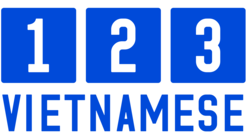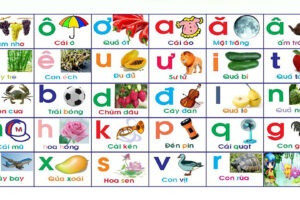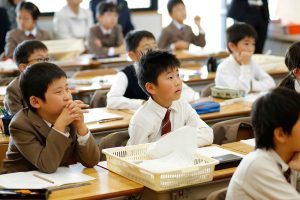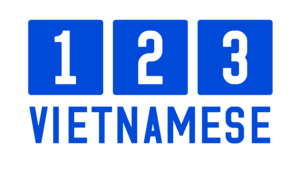
Building literacy skills with phonological awareness: Learning methods suitable for Vietnamese children living in Japan (Part 1)
More and more children with roots in the foreign countries are living and studying in Japan. At first, The Ministry of Education, Culture, Sports, Science and Technology had an education policy for these children, which required them to master Japanese language and adapt to Japanese life with the aim of treating them no differently than Japanese children. However, the policy is changing to one which respects their mother languages and mother cultures3. Majima (2009) mentioned the significances of supporting foreign students study of mother language as follows: (1) Mother language ability helps to develop perceptions (2). Mother language education helps to improve Japanese ability (3) Mother language and mother culture help to build identity (4) Mother language helps to maintain family ties (5). The foreign students have rights to learn and use their mother languages. The schools with a significant number of foreign students 1 registered have a special program to support Japanese language acquisition, to learn mother languages, to study subjects in Japanese or mother languages, to do activities related mother cultures and so on.
The author has supported children with roots in Vietnam to study Vietnamese for several years at some public schools in Osaka prefecture. Based on the experience, in this paper the author attempts to underscore the importance of developing phonological awareness among Vietnamese children living in Japan, in order to build literacy skills more effectively.
1. Vietnamese education for Vietnamese children and their literacy skills
Currently, there are 44,690 Vietnamese residents registered in Japan (Table 1). Some are visiting Japan temporarily in order to study or work and so on, some are in Japan permanently. (Here, the former is called “Vietnamese visiting japan” and the latter is conveniently called “Vietnamese living in Japan”). Most of the latter group were refugees who escaped from Vietnam and their families. An object of this study is the children of Vietnamese living in Japan.
(Table 1) The number of Vietnamese in Japan (2012)
| Status of residence | Number |
| Long Term Resident | 5,726 |
| Permanent Resident | 10,361 |
| Spouse of Japanese national | 1,778 |
| Spouse of Permanent Resident | 848 |
| Vietnamese living in Japan | 18,713 |
| Study | 5,767 |
| Training | 258 |
| Technical intern training | 13,524 |
| Designated Activities | 378 |
| without a status of residence | 55 |
| Temporary Refuge | 29 |
| Other status | 5,966 |
| Vietnamese visiting Japan | 25,977 |
| Total | 44,690 |
Source: The Ministry of Justice (2012)
Statistical charts of registered foreigners
Most children of Vietnamese living in Japan were born in Japan, and some of them have Japanese nationality. They speak Vietnamese with their parents or their relatives at home, and they speak Japanese to study and to communicate with their teachers and friends at school. They are able to speak and understand spoken Vietnamese somehow, but unable to read and write. On the other hand their parents have high hopes that their children will learn to read and write the language. Literacy is a very important skill which enables children to learn autonomously. Besides, reading and writing are skills which are easier for non-native teachers to teach than speaking and hearing.
Many of Vietnamese people living in Japan are from Southern Vietnam, and speak Southern Vietnamese dialect. There is a big difference between the Vietnamese writing system and the phonological system of the Southern dialect 4. Consequently, knowledge of the writing system (the name of the letters and how to pronounce the letters) is difficult to connect to literacy skills for Southern dialect speakers.
The schools support foreign pupils to study their mother languages, but of course they can’t spare so much time to teach the languages. In many schools, the time to teach mother languages is about two to four periods (45 minutes/ period) a month. It is extremely difficult for these children to obtain complete literacy in the limited time they have to learn Vietnamese.
So we need to grope for more effective methods than traditional techniques, which show students letters one by one and teach them how to read and write them as distinct units.
2. Phonological awareness method
Phonological awareness is the ability to recognize that a spoken word consists of a sequence of individual sounds (Ball & Blachman 1991). This ability has been considered to be related to success in early reading and spelling. Many researches have shown that phonological awareness can be taught to young children and that phonological awareness instruction including attention to the link between phonemes and letters is quite effective in improving reading and spelling skills (Amano 1970, Ball & Blachman 1988, 1991, Ball 1993, Bradley & Bryant 1983).
Pupils with roots in Vietnam have studied in Japan so they already know the link between sounds and letters. And they have Vietnamese vocabulary to some extent. Moreover, Vietnamese is a monosyllabic language and a syllable consists of Initials, Medials, Vowels, Endings and Tones. Monosyllabic languages can be easier to break words into phonemes than multisyllabic languages.
Tones | |||
Initials | Medials | (Rhymes) | |
Vowels | Endings | ||
(Figure 1) Vietnamese syllable structure
It is possible that if we can instruct Vietnamese children to break the words (the syllables) into smaller components (the phonemes), children could build literacy skills more effectively by identifying the components with the letters.
Author: Kondo Mika1- Shimizu Masaaki2









